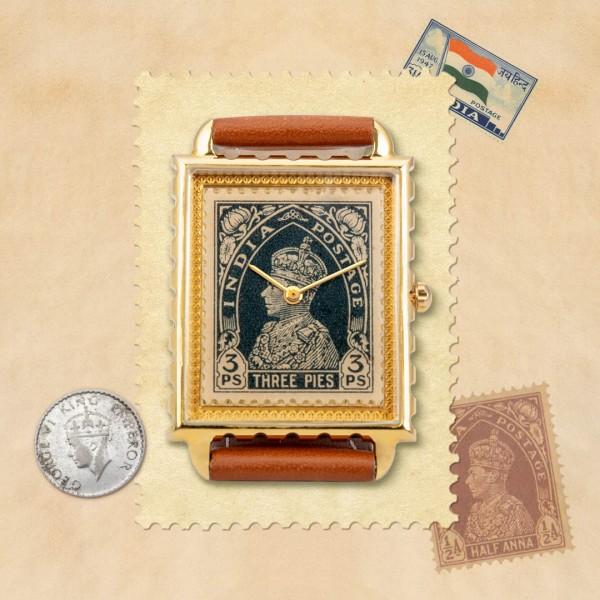The history of watches/timepieces in India starts with the Indian royalty. At the time, the common man could not even understand this complicated mechanism leave alone own one. For them it was mostly magical instruments owned by kings.
Watches in India date back to the 1900’s. Indians and their love for luxury collection transcends time and luxury timepieces top that list. The proof of this is Maharaja of Patiala Bhupinder Singh’s collection of minute repeater pocket watches. The Maharaja was always looking for extraordinary luxury items and watches were a passion. These luxury watches date back to the 1920s. These handcrafted watches were made in gold with an enameled portrait of the Maharaja on one side and watch with a start white dial circled with roman numerals on the other. What is even more fascinating is the little circular window within the larger dial indicating the ‘seconds’ hand.
Today, Minute repeaters are among the most unique and innovative watch complications. Desired by top luxury watch connoisseurs across the globe, this complication is exceptionally challenging to create. Maharaja Bhupinder further commissioned more intriguing watches. For example, he got the world's oldest Swiss horlogerieVacheron Constantin to make a pocket watch with a continuous calendar. This 1909 watch also had an in-built alarm, a moon phase as a chronograph along with a minute repeater—so many complications in one watch, truly a masterpiece. He commissioned another watch with the same brand, this time it was 1916 ladies wristwatch. He wanted a watch, where he did not have to look obviously at his wrist to check the time. So, Vacheron Constantin designed a watch that looked like a thick bracelet.
There are innumerable such historical stories that speak extensively of Indian royalty and their love for horology. Francesca Cartier Brickellin the creatingcartier.com blog talks about the Delhi Durbar of 1911, where Jacques Cartier displayed his luxury collection, and the maharajas were all interested in Cartier’s silver pocket watch. She further enunciates on how the 1917 classic tank watch, created by Louis Cartier became a rage among the Indian royalty too. One of the most interesting tales is that of JaegerLeCoultre’s Reverso watch. It all began with businessman and horologist César de Trey. On his travel to India, heattended a polo match at club for British army officers, where an officer who had broken his watch challenged him to create a watch that could withstand the shocks of a polo match. Trey intrigued by the challenge actually thought it would be amazing to create something that could protect a watch from shocks. He discussed this with Jacques-David LeCoultre, who put the plan to action and thus the Reverso, a, elegant designerwatch with a dial that could flip, protecting it from shocks was born. What was even more awesome about this watch was that its back case be customized. The most famous of the Reverso watch was one with the portrait of amystery Indian Maharani. It is truly the one of the brand’s best kept secrets.
Then came 1961, the Indian watch market changed from being a luxury offering affordable by the rich and opulent to being a household accessory owned by all. Hindustan Machines Tools (HMT) set up it’s very first watch manufacturing Unit at Bangalore in collaboration with M/s Citizen Watch Co., Japan. The then Prime Minister of India, Jawaharlal Nehru proudly released the first batch of Hand Wound HMT Wrist Watches. HMT soon became a household name.
The rich continued to seek unique handcrafted luxury watches. But the intricacies of horology and the fascination that came with complicated movements were lost. The Indian middle class were never interested in the technical/complicated aspect of watches, their movements, etc.
Then came Titan (a venture by the Tata group and the Tamil Nadu Industrial Development Corporation) came into the picture. Titan understood the Indian love for gold and jewelry and greatly transformed the watch and jewelry industry in India. They even manufacture watches that look like jewelry(raga). With a diverse range of quality watches and 50% share of the organized watch market, they are the fifth largest integrated watch manufacturer in the world.
Today, the Indian middle class have risen, the disposable income has increased, they are more aware and understand ‘luxury’ and appreciate the workings of a good mechanical watch. But, along the way design preference and tastes also have changed. Today’s youth prefer value for the money they spend—firstly, they are all about the latest ‘new’ thing in the market. Secondly, if they have paid handsomely for a brand, they want the product to show it. Besides, with the advent of smart watches by Apple, Samsung, etc., watches today are more about adding to your style and less about actually telling the time. Which is where bespoke watch brands like Jaipur Watch Company come into the picture. They understand the Indian customer-base and their expectations. Jaipur Watch Company makes watches that suit the sensibility and personality of every individual that approaches them. They believe in making watches that resonate personally with every individual that comes to them.

